Asymmetrical balance interior design creates visually dynamic spaces through strategic placement of dissimilar elements that achieve harmony without mirror-image symmetry. This design approach uses varying visual weights, colors, textures, and forms to establish equilibrium while fostering creativity and personal expression. Unlike traditional symmetrical arrangements, asymmetrical balance encourages experimentation with scale, proportion, and unexpected combinations. The technique transforms ordinary rooms into captivating environments that feel both sophisticated and lived-in, offering endless possibilities for customization while maintaining visual stability and aesthetic appeal.
1. Asymmetrical Balance Sofa Arrangements

Transform your living room with asymmetrical balance sofa arrangements that create dynamic seating areas without rigid matching. Position a large sectional sofa on one side of the room and balance its visual weight with a cluster of smaller elements on the opposite side, such as two accent chairs and a side table. This approach distributes visual mass unevenly while maintaining equilibrium through careful consideration of scale and proportion. The key lies in ensuring that the smaller grouping collectively matches the visual presence of the larger piece. Consider varying chair heights, textures, and colors within your chosen palette to add interest while preserving cohesion throughout the space.
2. Asymmetrical Balance Gallery Wall Layouts
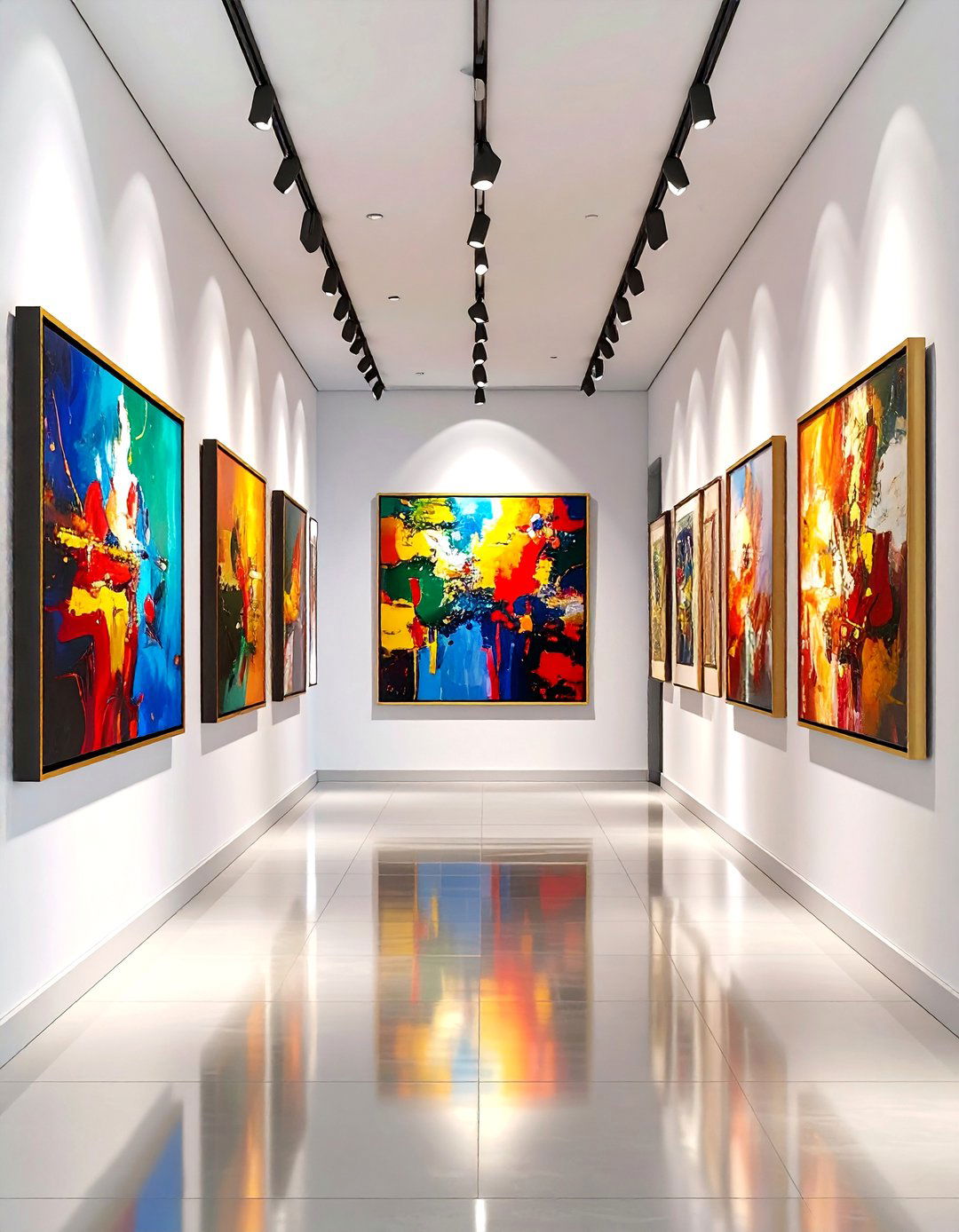
Create stunning asymmetrical balance gallery wall layouts that showcase artwork through intentional imbalance rather than grid-like precision. Start with one large anchor piece positioned off-center, then arrange smaller artworks around it in varying sizes and orientations. Mix framed photographs, paintings, and prints while maintaining a cohesive color palette or theme to unify the display. The visual weight should feel distributed across the wall without perfect symmetry, creating natural movement that guides the eye throughout the composition. Consider incorporating different frame styles and matting options while ensuring adequate spacing between pieces to prevent visual overcrowding and maintain the sophisticated, curated appearance.
3. Asymmetrical Balance Lighting Fixtures
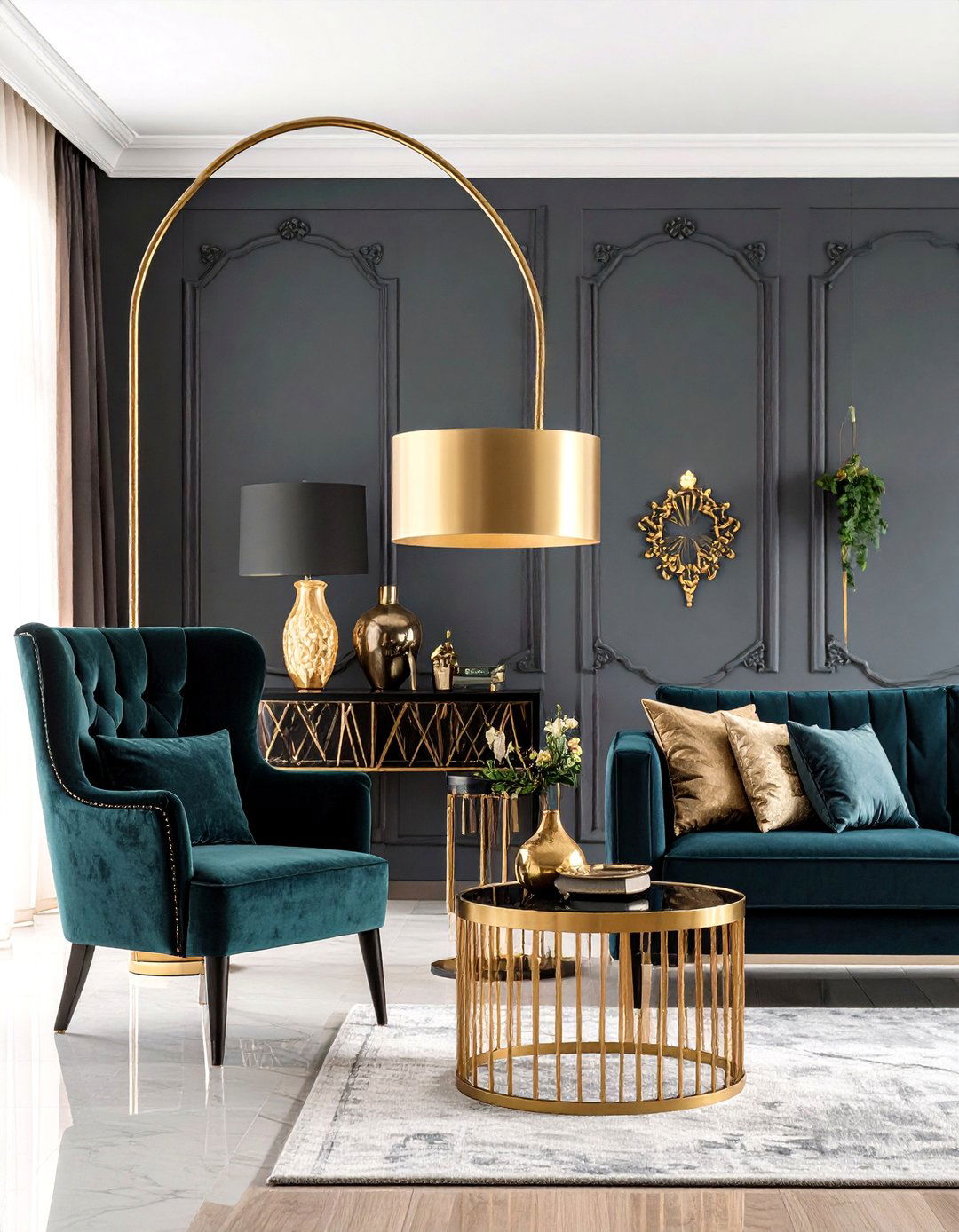
Implement asymmetrical balance lighting fixtures to add dramatic visual interest while providing functional illumination throughout your space. Instead of matching table lamps, place a tall floor lamp on one side of a seating area and balance it with a shorter table lamp plus decorative objects on the opposite side. This technique creates layers of light at different heights while maintaining visual equilibrium. Consider pendant lights at varying heights over kitchen islands or dining areas, or use asymmetrical chandeliers that feature offset elements. The goal is achieving balanced illumination through diverse light sources that complement rather than mirror each other, enhancing both functionality and aesthetic appeal.
4. Asymmetrical Balance Color Block Walls
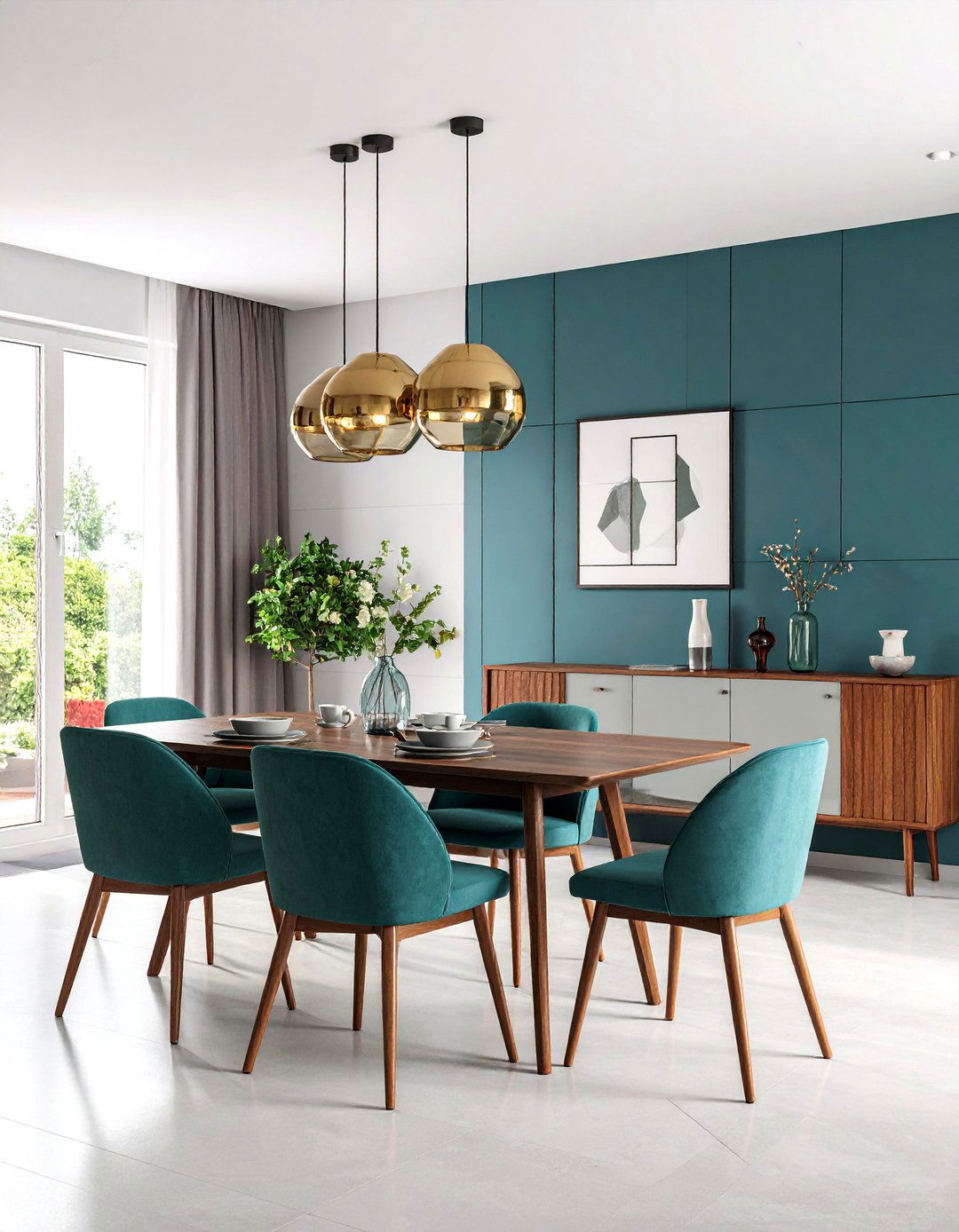
Design asymmetrical balance color block walls that create bold focal points through strategic color placement rather than traditional paint schemes. Paint geometric shapes, organic forms, or architectural elements in contrasting colors that don't follow symmetrical patterns. For example, paint one section of a wall in a deep accent color while leaving the remainder neutral, then balance this visual weight with furniture or artwork placement. This technique allows for creative expression while maintaining room harmony through thoughtful color distribution. Consider the room's natural light, existing furniture colors, and desired mood when selecting your palette to ensure the asymmetrical color blocks enhance rather than overwhelm the space.
5. Asymmetrical Balance Floating Shelves
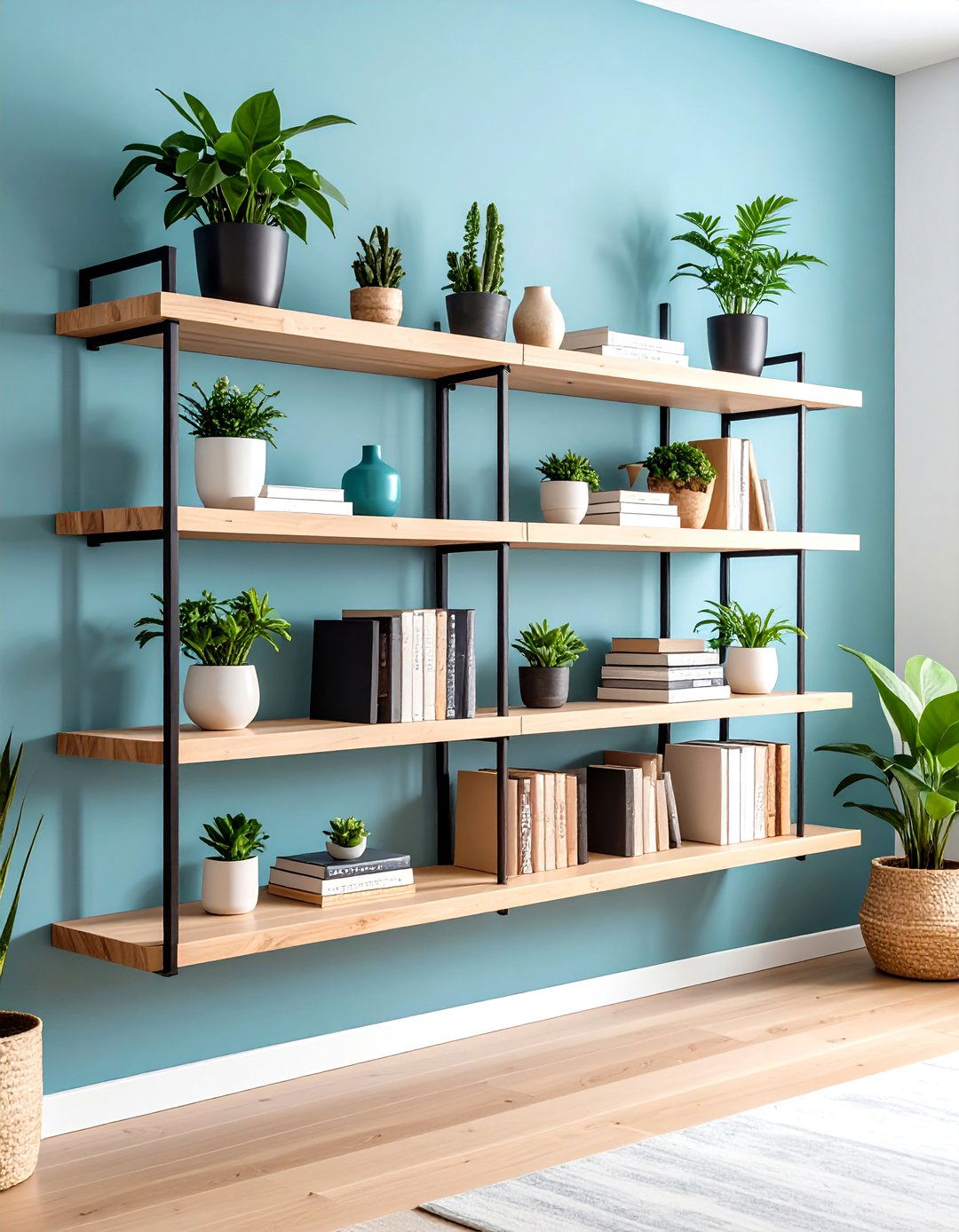
Install asymmetrical balance floating shelves that provide both storage and visual interest through varied placement and styling. Instead of evenly spaced, identical shelves, create dynamic wall displays using different shelf lengths, heights, and spacing intervals. Place a long shelf high on one side and balance it with two shorter shelves at different levels on the opposite side. Style each shelf with objects of varying heights, textures, and colors while maintaining visual weight distribution. Consider mixing books, plants, decorative objects, and functional items to create layers of interest. This approach maximizes wall space utilization while creating an engaging, museum-like display that reflects personal style and functionality.
6. Asymmetrical Balance Dining Room Setups
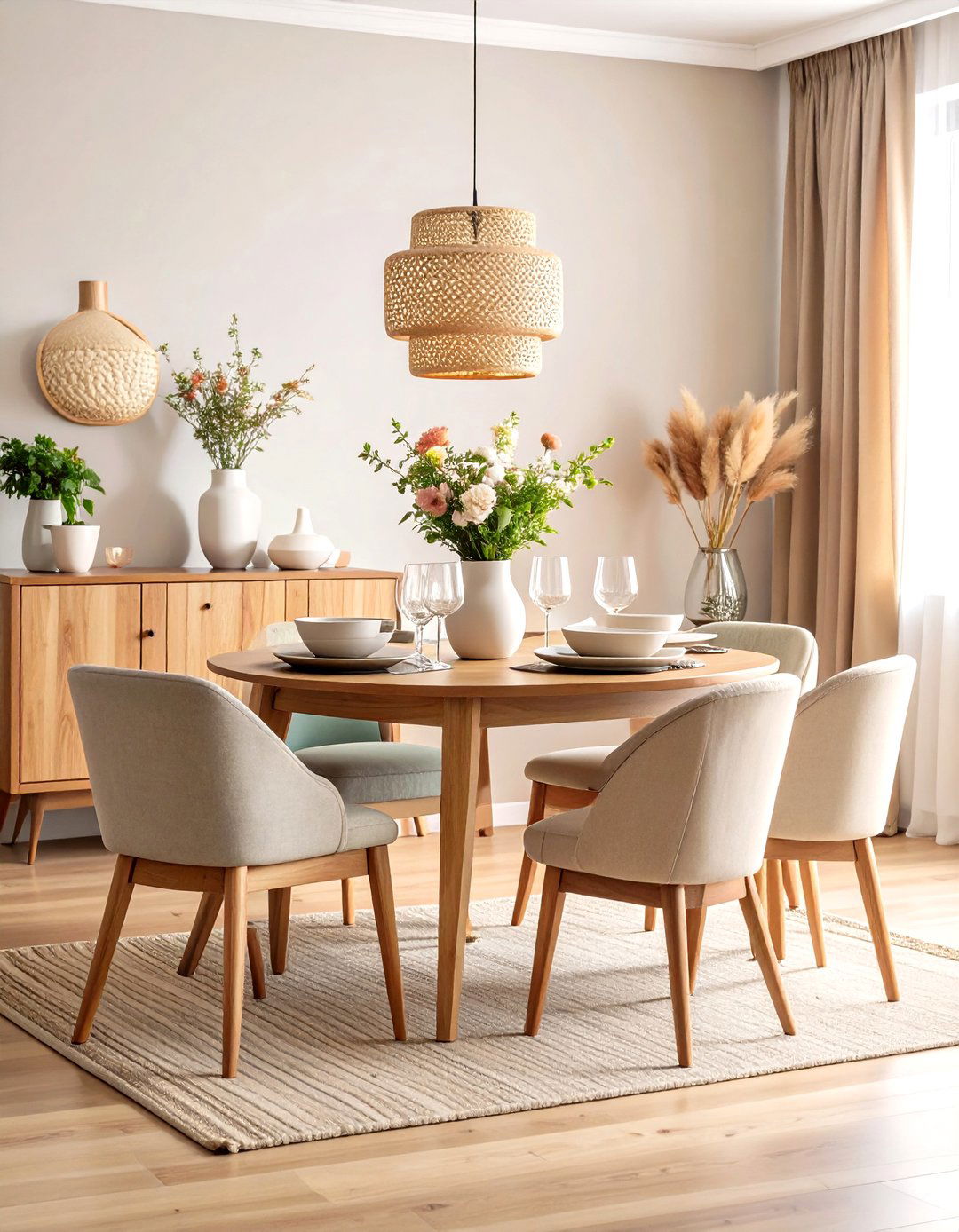
Establish asymmetrical balance dining room setups that move beyond traditional centered arrangements to create more dynamic eating spaces. Position your dining table slightly off-center in the room, then balance this placement with varying furniture pieces such as a buffet, bookshelf, or accent chair. Use different chair styles around the table - perhaps upholstered chairs on one side and wooden chairs on the other - while maintaining color or material connections. This approach creates conversational flow and visual intrigue while preserving functionality. Consider asymmetrical lighting above the table, such as a cluster of pendant lights rather than a single centered chandelier, to reinforce the balanced yet unexpected aesthetic.
7. Asymmetrical Balance Bedroom Nightstands
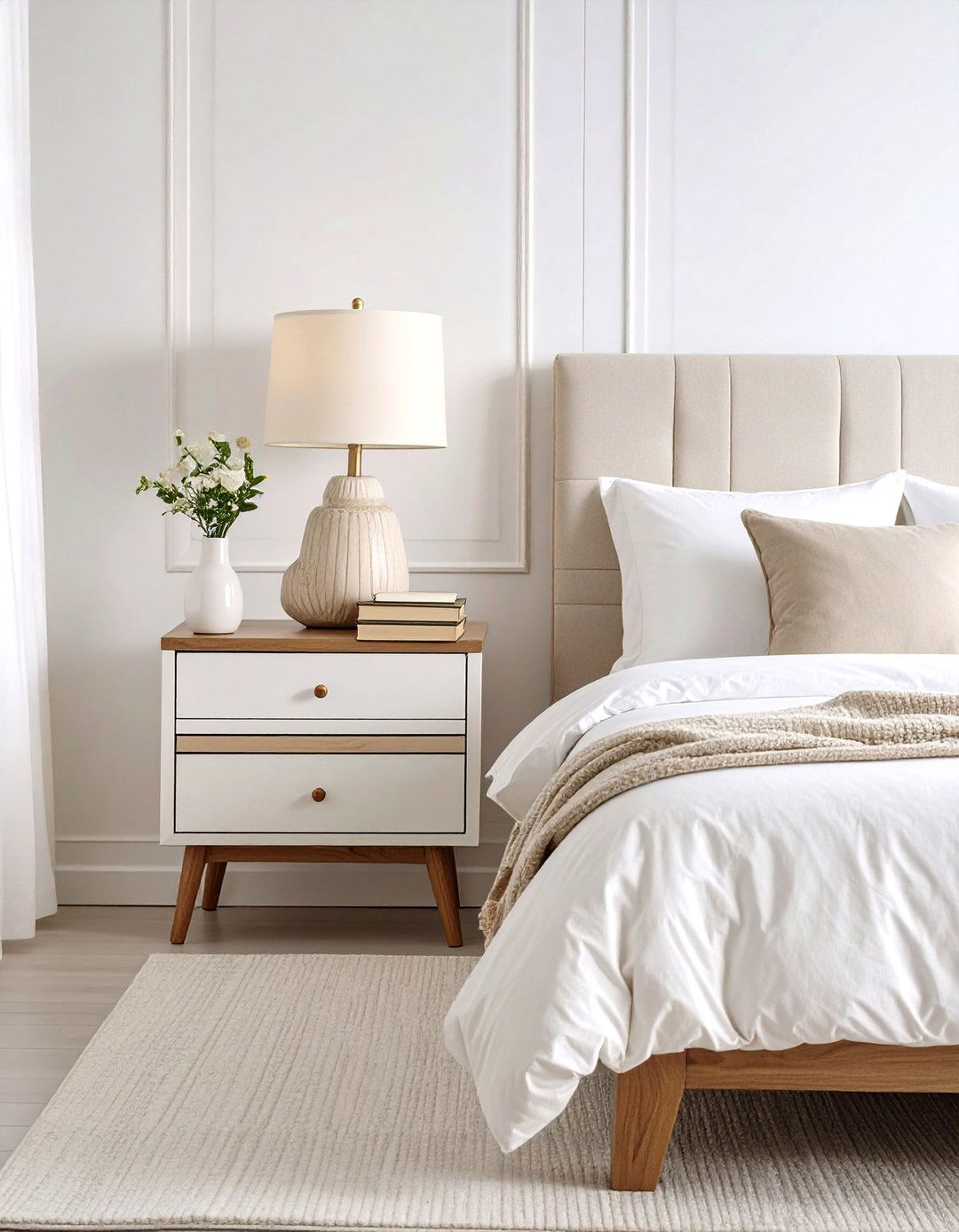
Create asymmetrical balance bedroom nightstands that offer personalized functionality while maintaining visual harmony on either side of the bed. Instead of matching nightstands, use different pieces that share similar visual weight - perhaps a tall narrow table on one side balanced by a shorter, wider piece on the other. Style each surface with varying accessories: a table lamp and books on one side, balanced by a floor lamp and small decorative objects on the other. This approach accommodates different personal needs while creating visual interest. Consider mixing materials like wood and metal, or varying heights while maintaining similar color palettes to achieve cohesive asymmetrical balance.
8. Asymmetrical Balance Living Room Accessories
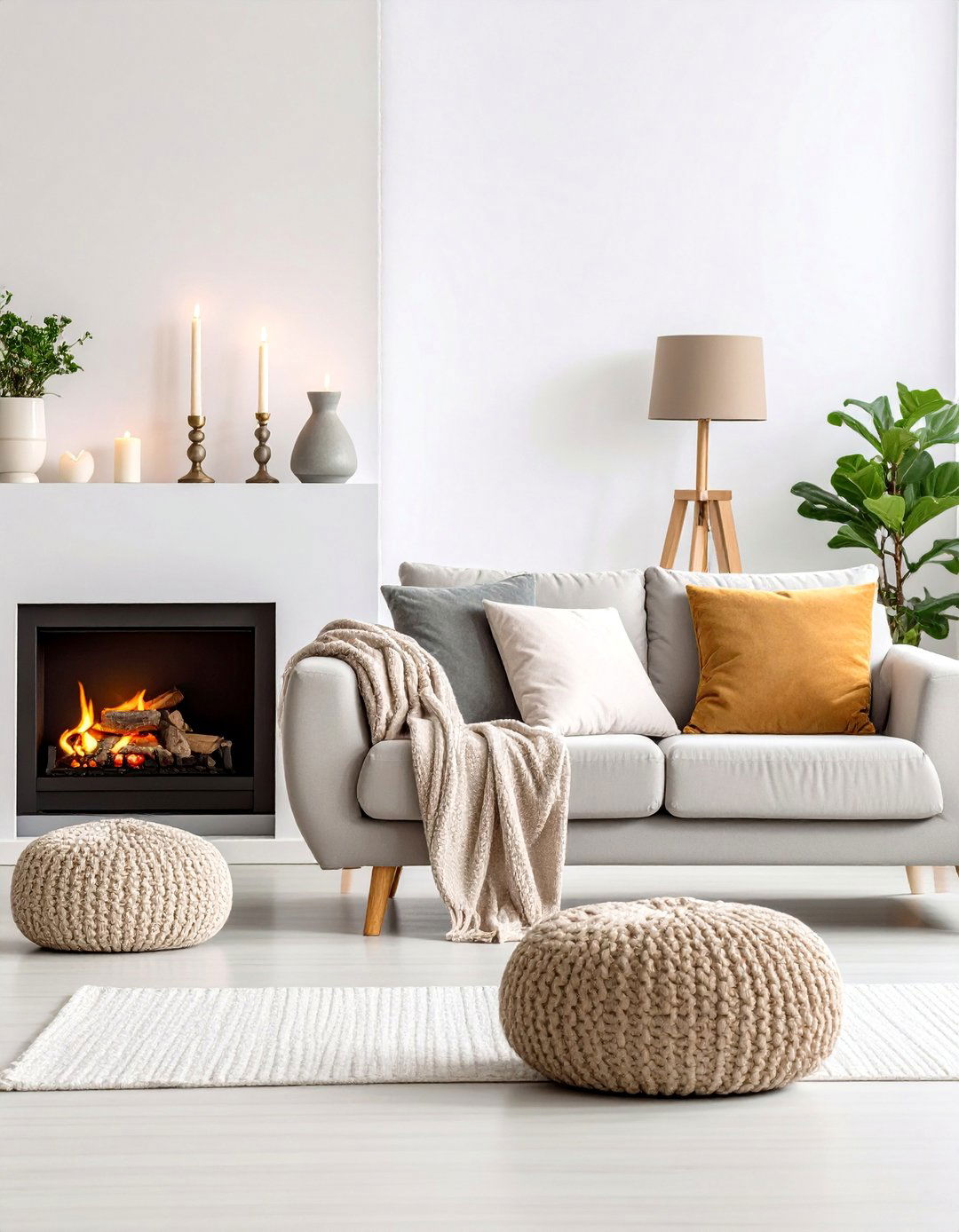
Arrange asymmetrical balance living room accessories that create visual interest through thoughtful placement of decorative objects, pillows, and functional items. Group accessories in odd numbers - three candlesticks on one side of a mantel balanced by a single larger object on the other side. Mix pillow sizes, patterns, and textures on sofas while maintaining color harmony. Place a large plant in one corner and balance it with a grouping of smaller objects elsewhere. This styling technique adds personality and prevents rooms from feeling too formal or predictable. The key lies in distributing visual weight thoughtfully while allowing each piece to contribute to the overall composition.
9. Asymmetrical Balance Kitchen Island Decor

Style asymmetrical balance kitchen island decor that enhances functionality while creating visual appeal through strategic object placement. Instead of centering a bowl of fruit, position it toward one end and balance with a cluster of different-sized cutting boards or a small plant grouping on the opposite side. Vary bar stool heights or styles to create visual rhythm without perfect matching. Consider pendant lighting at different heights above the island, or use asymmetrical hardware placement on cabinets. This approach maintains the kitchen's practical nature while introducing design elements that make the space feel curated and intentional rather than purely utilitarian, enhancing both aesthetics and daily functionality.
10. Asymmetrical Balance Entryway Designs
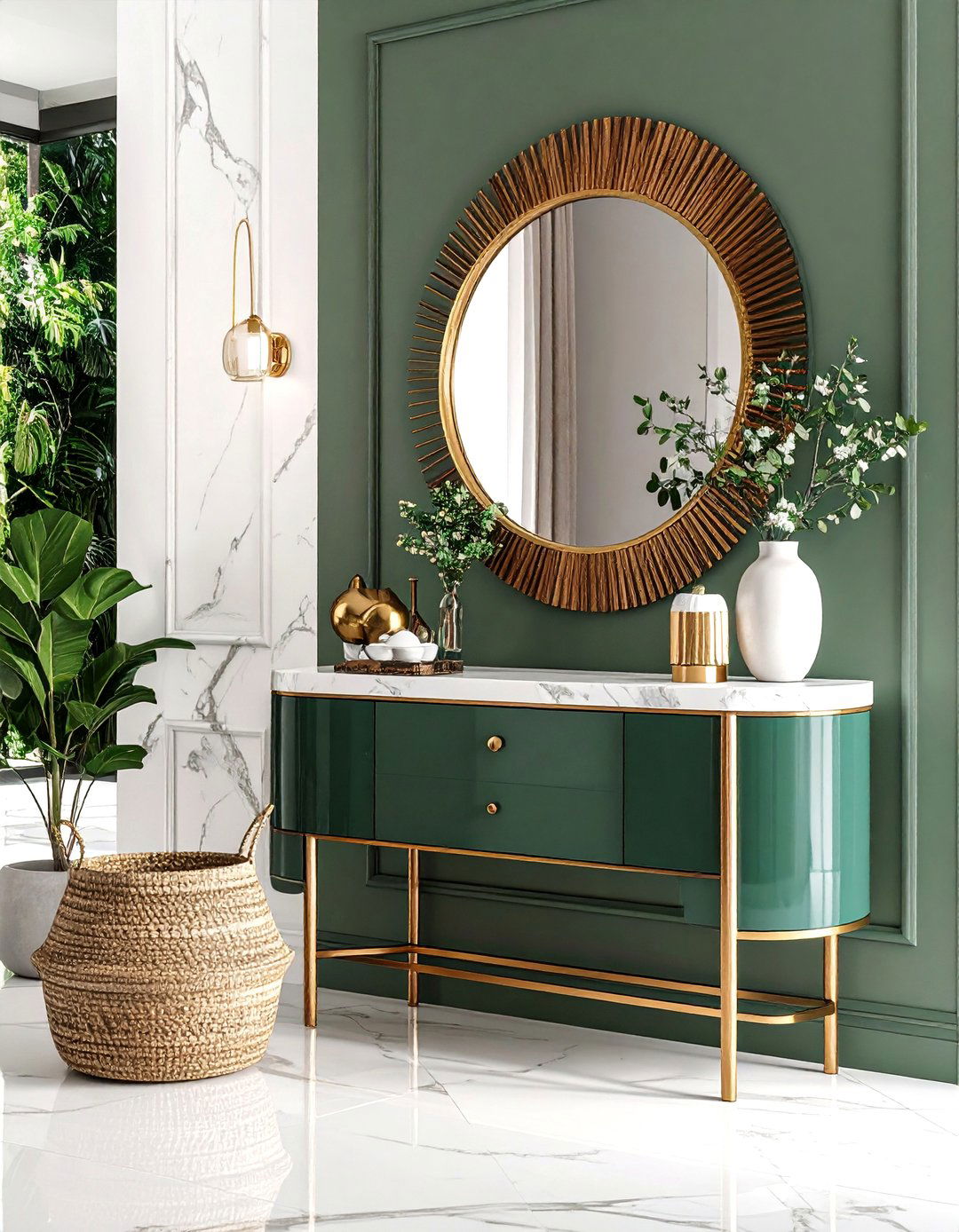
Develop asymmetrical balance entryway designs that create welcoming first impressions through purposeful arrangement of furniture and decorative elements. Place a console table against one wall and balance its visual weight with a tall mirror or artwork grouping on the adjacent wall. Use different storage solutions - perhaps a coat rack on one side and a decorative basket on the other - while maintaining functional flow. Consider varying lighting through wall sconces at different heights or a combination of ceiling and table lighting. This approach maximizes limited entryway space while creating an engaging introduction to your home's design aesthetic and establishing the tone for interior spaces beyond.
11. Asymmetrical Balance Textile Mixing

Master asymmetrical balance textile mixing by combining fabrics, patterns, and textures in unexpected yet harmonious ways throughout your space. Mix smooth silk pillows with nubby linen throws, or combine geometric patterns with organic florals while maintaining a cohesive color story. Place different rug sizes and patterns in adjacent areas - a large neutral rug in the seating area balanced by a smaller patterned accent rug nearby. Layer curtains of different weights or styles on various windows while keeping color connections. This technique adds depth and tactile interest while preventing spaces from feeling flat or monotonous, creating rooms that invite both visual exploration and physical comfort.
12. Asymmetrical Balance Focal Point Creation
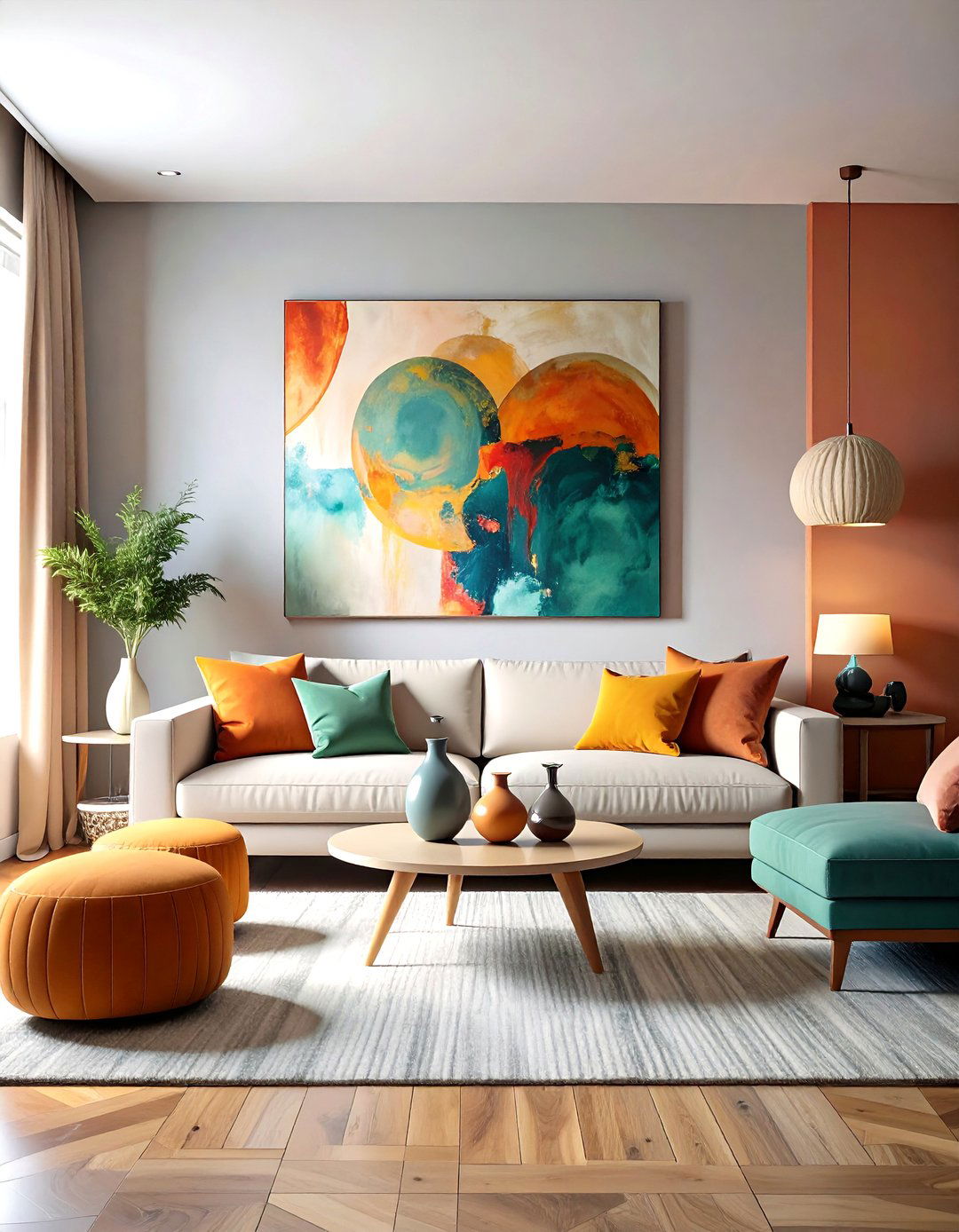
Establish asymmetrical balance focal point creation by designing spaces around intentionally off-center statement pieces that anchor room compositions. Position a dramatic piece of artwork, an oversized mirror, or architectural feature like a fireplace as your primary focal point, then arrange furniture and accessories to create visual flow toward and around this element. Balance a large focal point with several smaller supporting elements placed strategically throughout the room. This approach guides attention while maintaining visual interest across the entire space. Consider how lighting, color, and texture can reinforce your focal point while supporting elements provide necessary balance and prevent the space from feeling lopsided or overwhelming.
13. Asymmetrical Balance Office Layouts
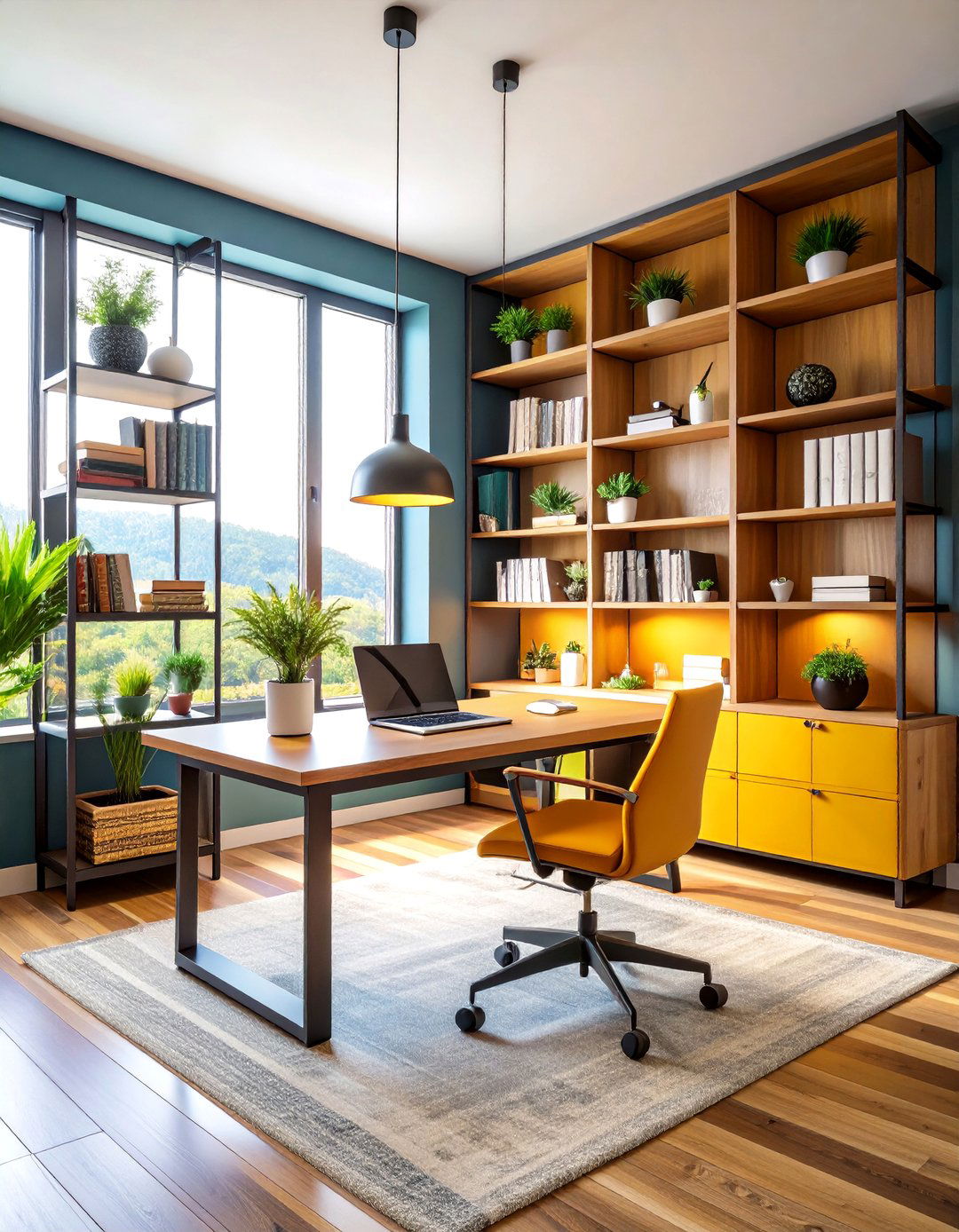
Design asymmetrical balance office layouts that promote productivity while creating visually engaging work environments. Position your desk at an angle or off-center in the room, then balance this placement with storage solutions, seating areas, or decorative elements. Use different heights and types of storage - tall bookcases on one side balanced by shorter cabinets and floating shelves on another. Mix task and ambient lighting sources throughout the space rather than relying on centered overhead fixtures. This approach creates dynamic work zones while maintaining professional functionality. Consider varying textures and materials to add visual interest while keeping color palettes conducive to focus and creativity in your workspace.
14. Asymmetrical Balance Outdoor Spaces

Create asymmetrical balance outdoor spaces that blend natural beauty with intentional design through strategic placement of furniture, plants, and decorative elements. Arrange seating areas that flow naturally with landscape features rather than formal symmetrical patterns. Balance a large outdoor sofa with multiple smaller chairs and side tables, or position dining furniture to take advantage of views while maintaining visual equilibrium. Use varying planter sizes and plant heights to create natural asymmetrical groupings. Consider outdoor lighting at different levels and intensities to enhance evening ambiance. This approach respects natural surroundings while creating functional, beautiful outdoor rooms that extend indoor living concepts into landscape settings.
15. Asymmetrical Balance Stairway Displays
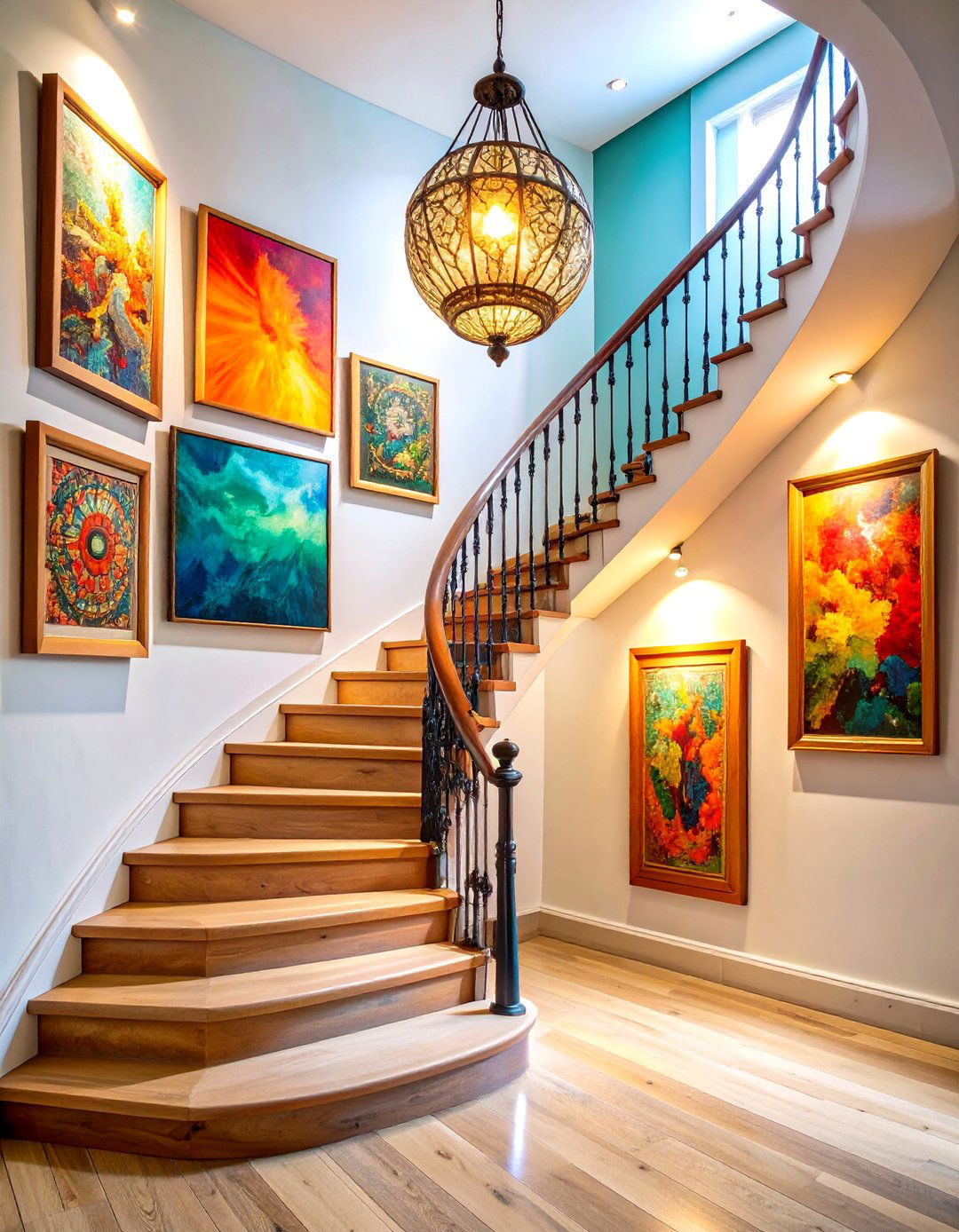
Develop asymmetrical balance stairway displays that transform transitional spaces into gallery-like experiences through thoughtful arrangement of artwork, lighting, and decorative elements. Create wall displays that follow the stair's natural angle while varying frame sizes and artwork types. Balance larger pieces on wider wall sections with smaller groupings on narrower areas. Consider different lighting techniques - perhaps a series of small spotlights highlighting artwork balanced by a statement pendant light in the stairwell. Use the stair landing as an opportunity for asymmetrical furniture placement or decorative object displays. This approach maximizes often-overlooked vertical space while creating visual interest that enhances movement through your home's levels.
16. Asymmetrical Balance Mirror Arrangements
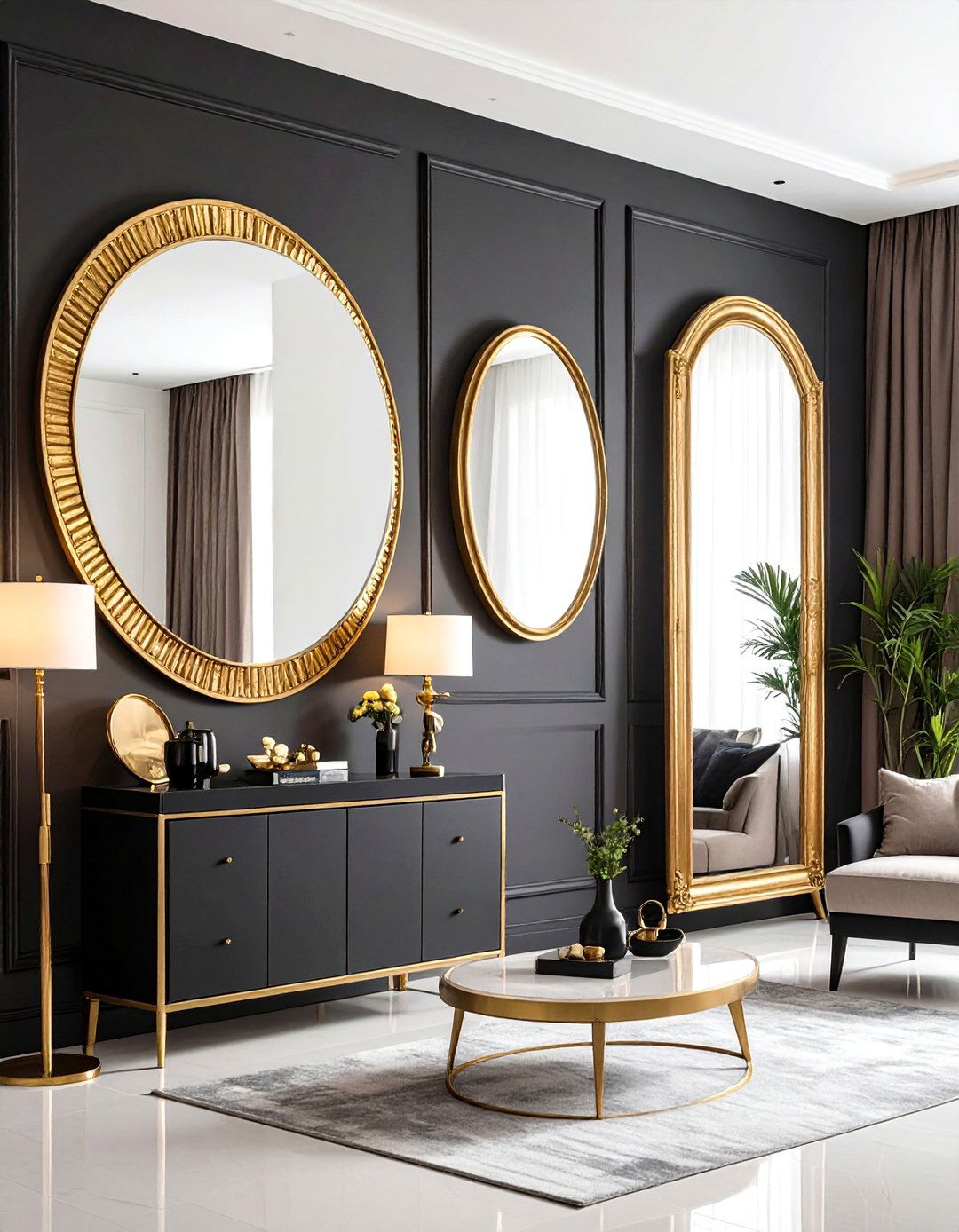
Install asymmetrical balance mirror arrangements that enhance light reflection and spatial perception through varied placement and sizing. Instead of centered mirrors above furniture pieces, create dynamic groupings using different mirror shapes, sizes, and frame styles. Position a large round mirror on one wall section balanced by several smaller mirrors of varying shapes on another area. Consider different heights and angles to create movement and visual interest. Mix framed and frameless options while maintaining material or color connections. This technique amplifies natural light while creating illusions of expanded space, making rooms feel larger and more dynamic while serving both functional and decorative purposes.
17. Asymmetrical Balance Plant Groupings
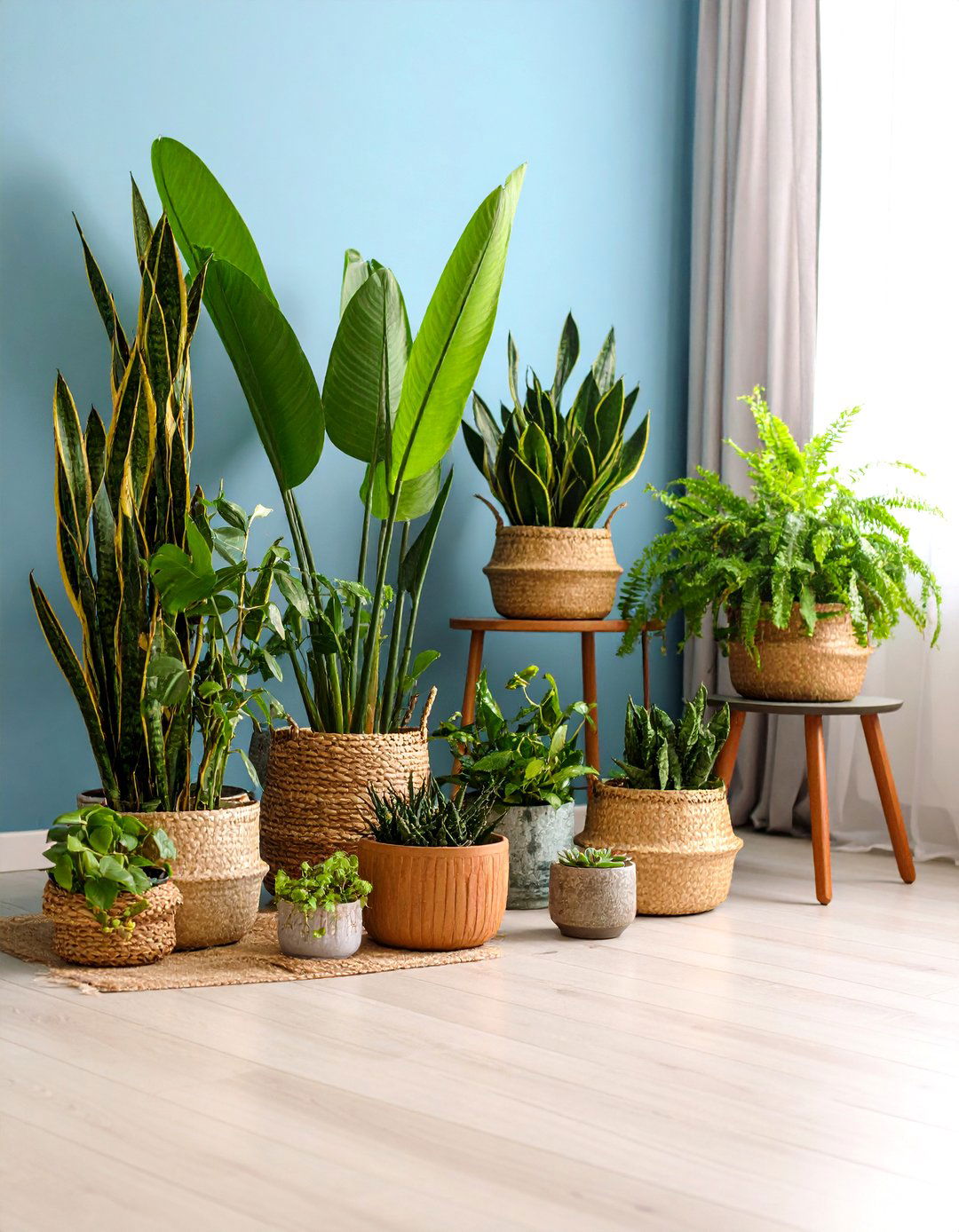
Arrange asymmetrical balance plant groupings that bring natural elements into interior spaces through strategic placement of varying plant sizes, types, and containers. Create floor-level arrangements using one large plant balanced by several smaller plants in different containers. Mix hanging plants with tabletop varieties to add vertical dimension. Consider different plant types - perhaps a tall snake plant balanced by trailing pothos and compact succulents. Vary container materials, colors, and heights while maintaining overall color harmony. This approach adds life and natural texture to rooms while creating visual interest through organic shapes and varying green tones that complement other design elements.
18. Asymmetrical Balance Window Treatments
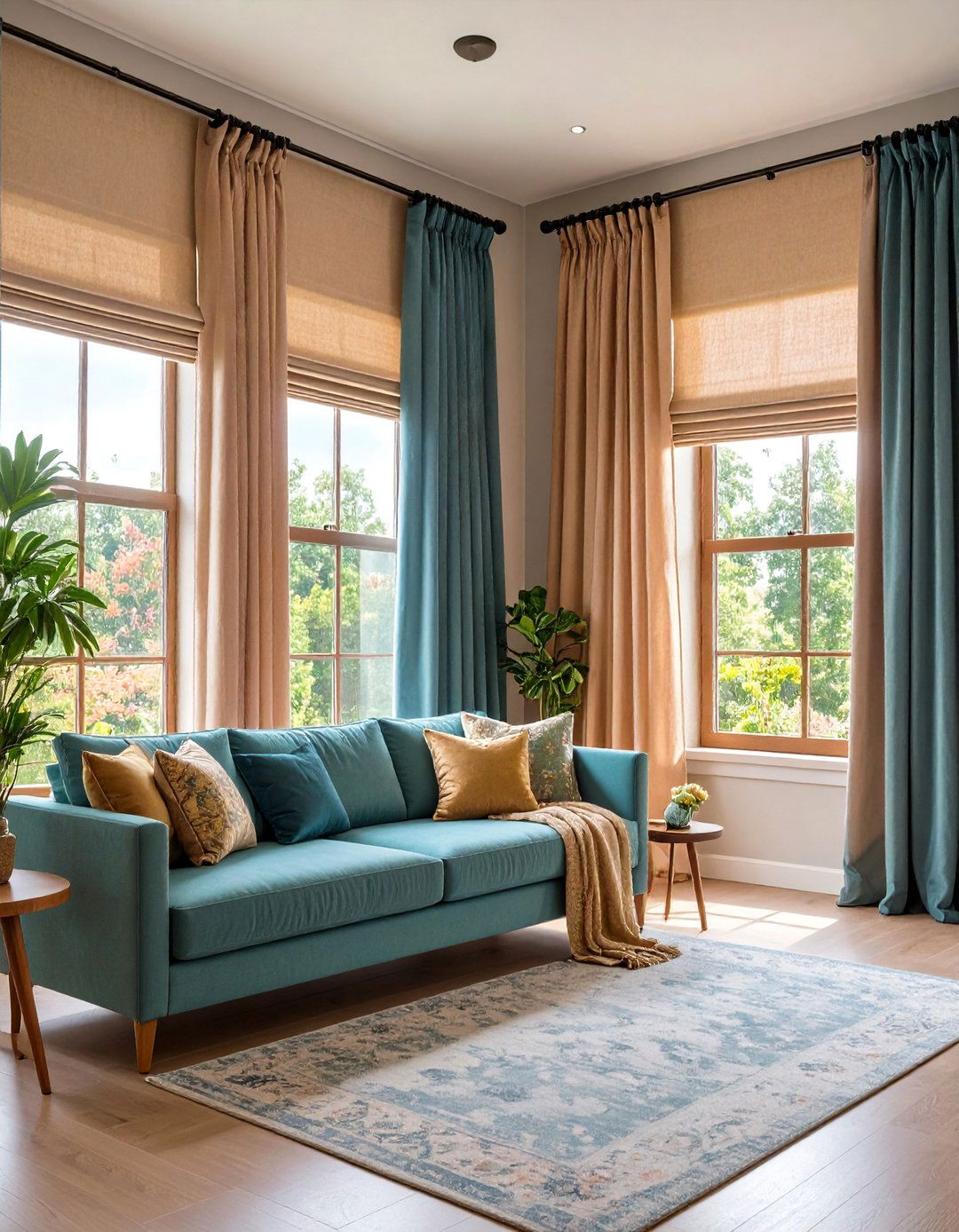
Design asymmetrical balance window treatments that enhance natural light while creating visual interest through varied fabric choices, hanging methods, and styling techniques. Instead of identical treatments on all windows, use different styles that share common elements - perhaps full-length curtains on one window balanced by roman shades on another, both in coordinating colors or patterns. Vary curtain lengths, textures, or hanging heights while maintaining color connections. Consider asymmetrical valances or swag arrangements. This approach allows for individual window customization based on light needs and architectural features while maintaining cohesive design throughout the room, enhancing both functionality and aesthetic appeal.
19. Asymmetrical Balance Floor Lamp Placement
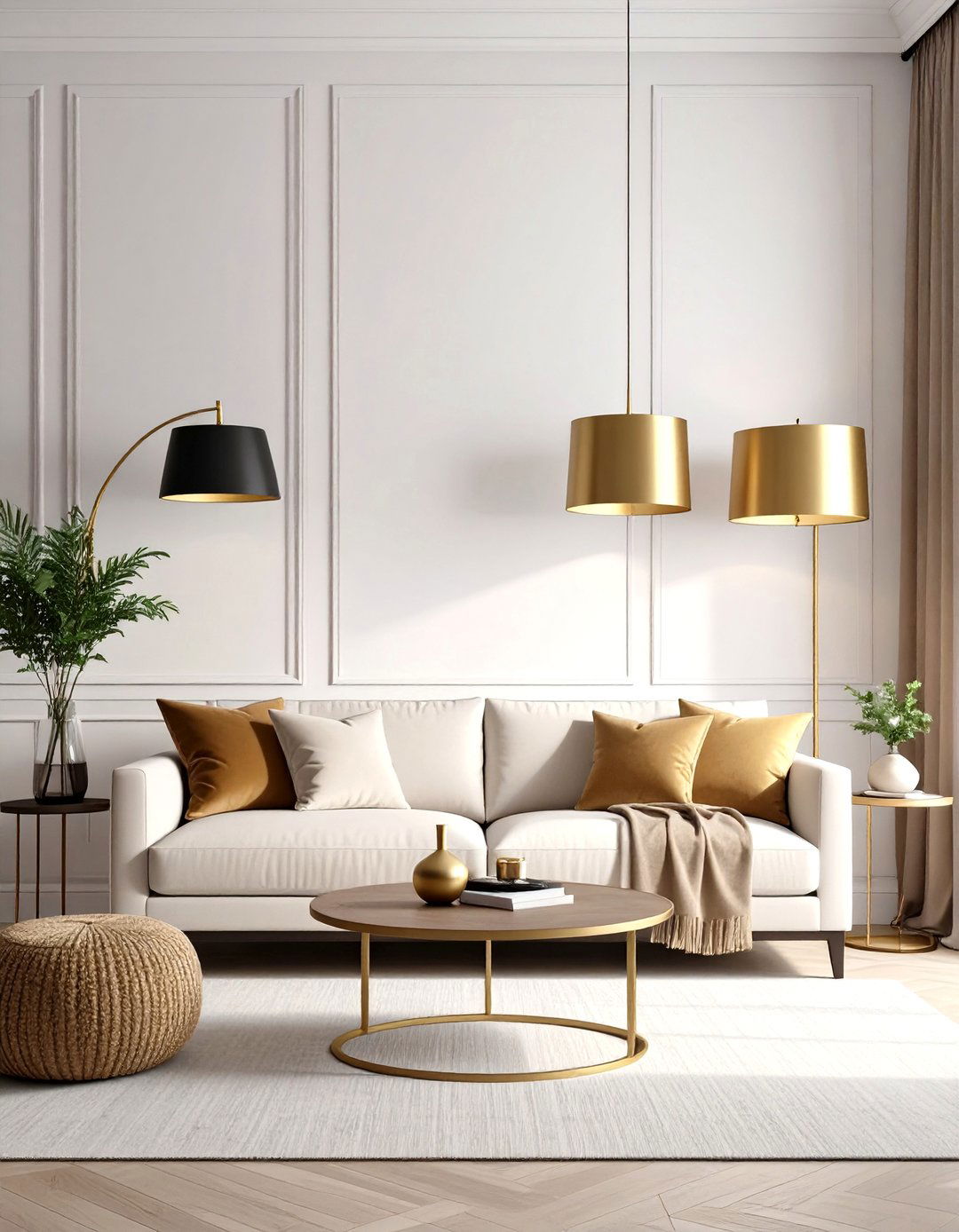
Strategically position asymmetrical balance floor lamp placement to create layered lighting while establishing visual rhythm through varied lamp heights, styles, and positions. Instead of matching table lamps, use different floor lamp styles placed at varying distances from seating areas. Balance a tall arc lamp on one side of a room with a shorter floor lamp and table lighting on the opposite side. Consider different light colors and intensities to create ambiance zones. Mix modern and traditional styles while maintaining material or color connections. This approach provides functional task and ambient lighting while creating visual anchors that help define space boundaries and enhance room proportion.
20. Asymmetrical Balance Mixed Media Walls

Create asymmetrical balance mixed media walls that combine different wall treatments, materials, and decorative elements to form cohesive yet dynamic focal points. Combine painted sections with wallpaper, wood paneling, or tile work in asymmetrical patterns that maintain visual equilibrium. Mix two-dimensional artwork with three-dimensional objects like floating shelves, sconces, or architectural elements. Consider different textures and finishes - perhaps smooth paint balanced by rough stone or wood textures. Use varying scales and proportions while maintaining color harmony throughout the composition. This technique creates statement walls that serve as room focal points while demonstrating sophisticated design sensibility and creative problem-solving in space planning.
Conclusion:
Asymmetrical balance interior design offers endless creative possibilities for transforming spaces into dynamic, personalized environments. These twenty ideas demonstrate how thoughtful placement of furniture, accessories, lighting, and decorative elements can achieve visual harmony without rigid symmetry. The key lies in understanding visual weight distribution while maintaining color, texture, and material connections throughout each space. By embracing asymmetrical principles, you create homes that feel both sophisticated and authentically lived-in, reflecting individual style while maintaining design integrity. This approach encourages experimentation and creativity while establishing functional, beautiful spaces that evolve with your lifestyle.




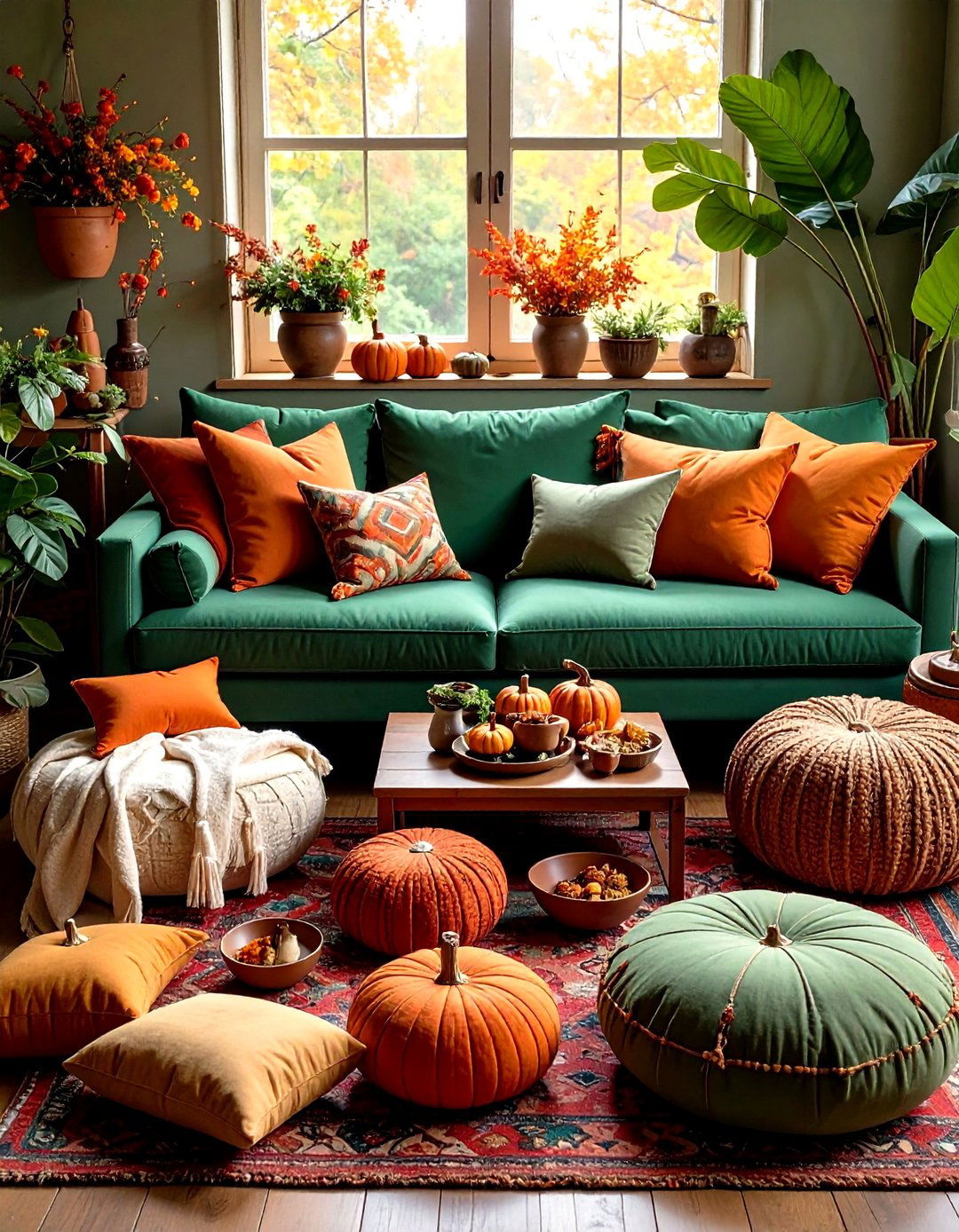

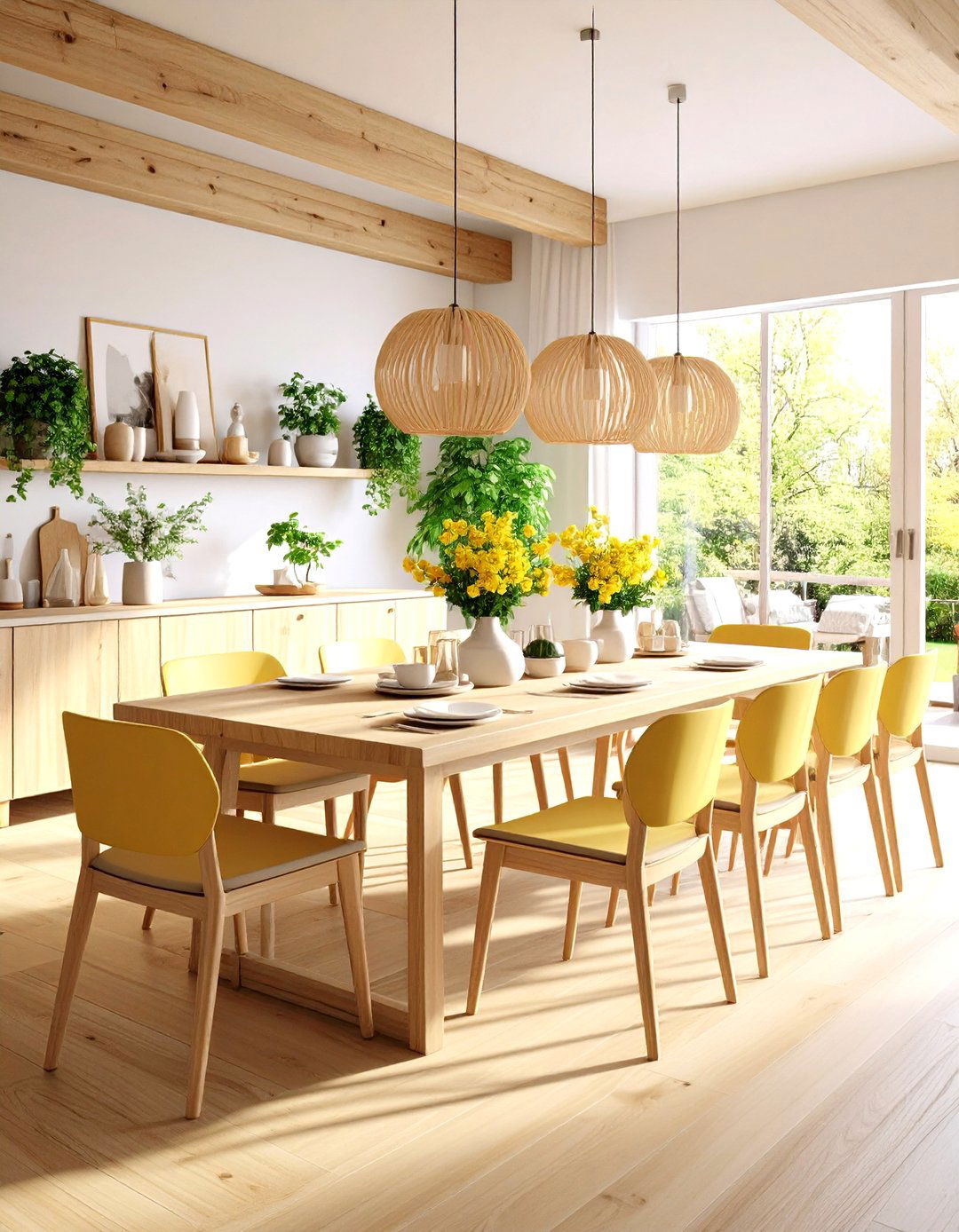
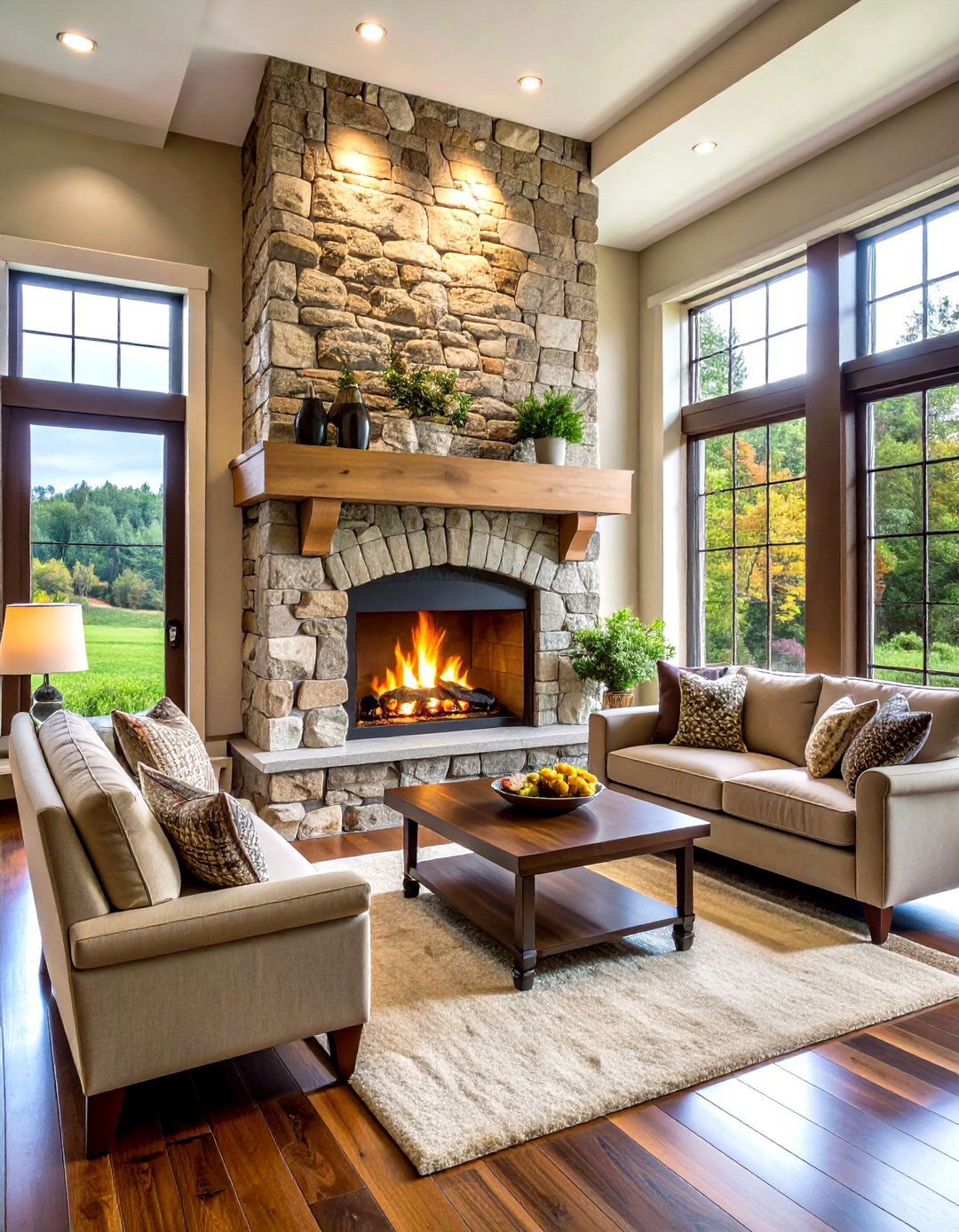
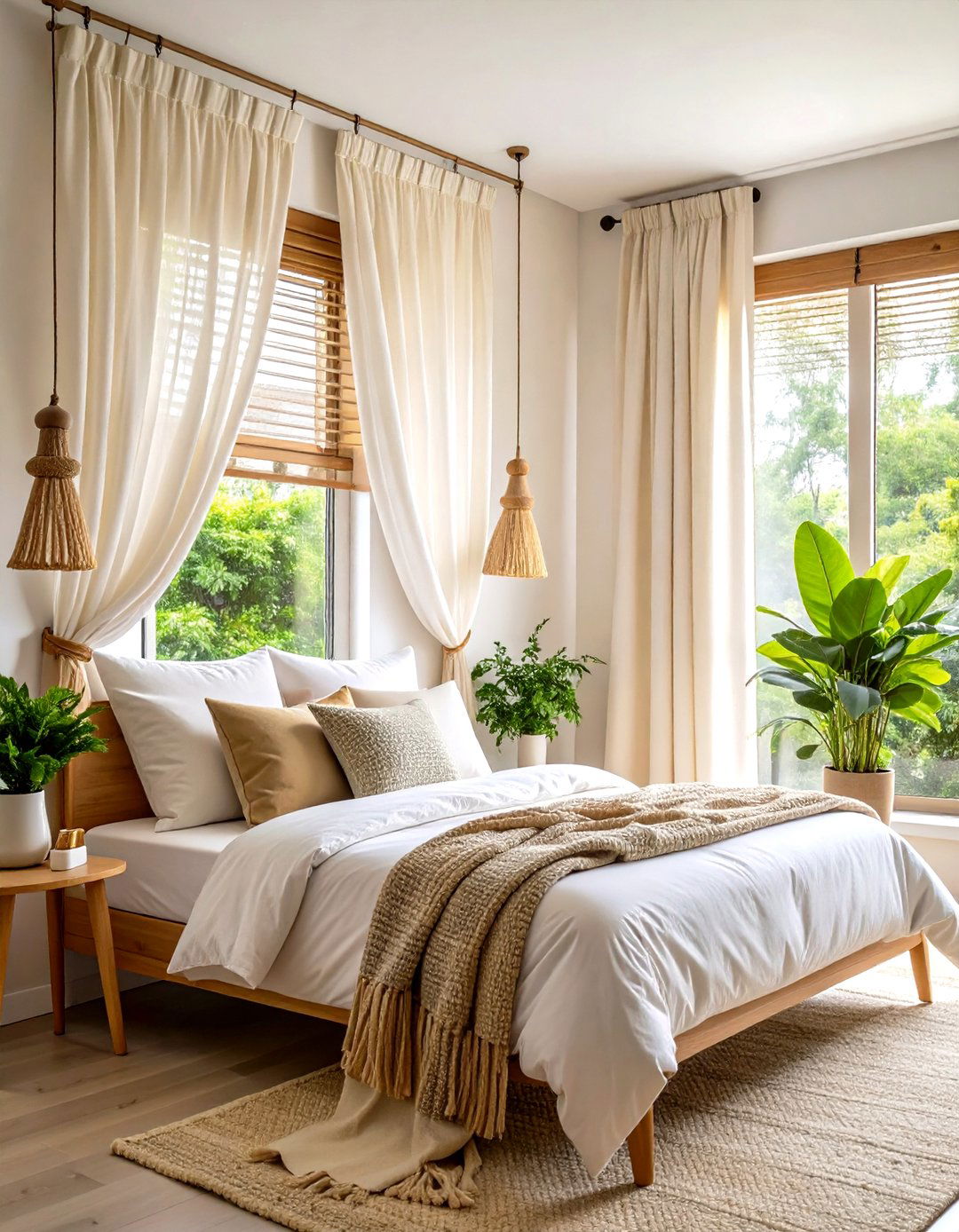
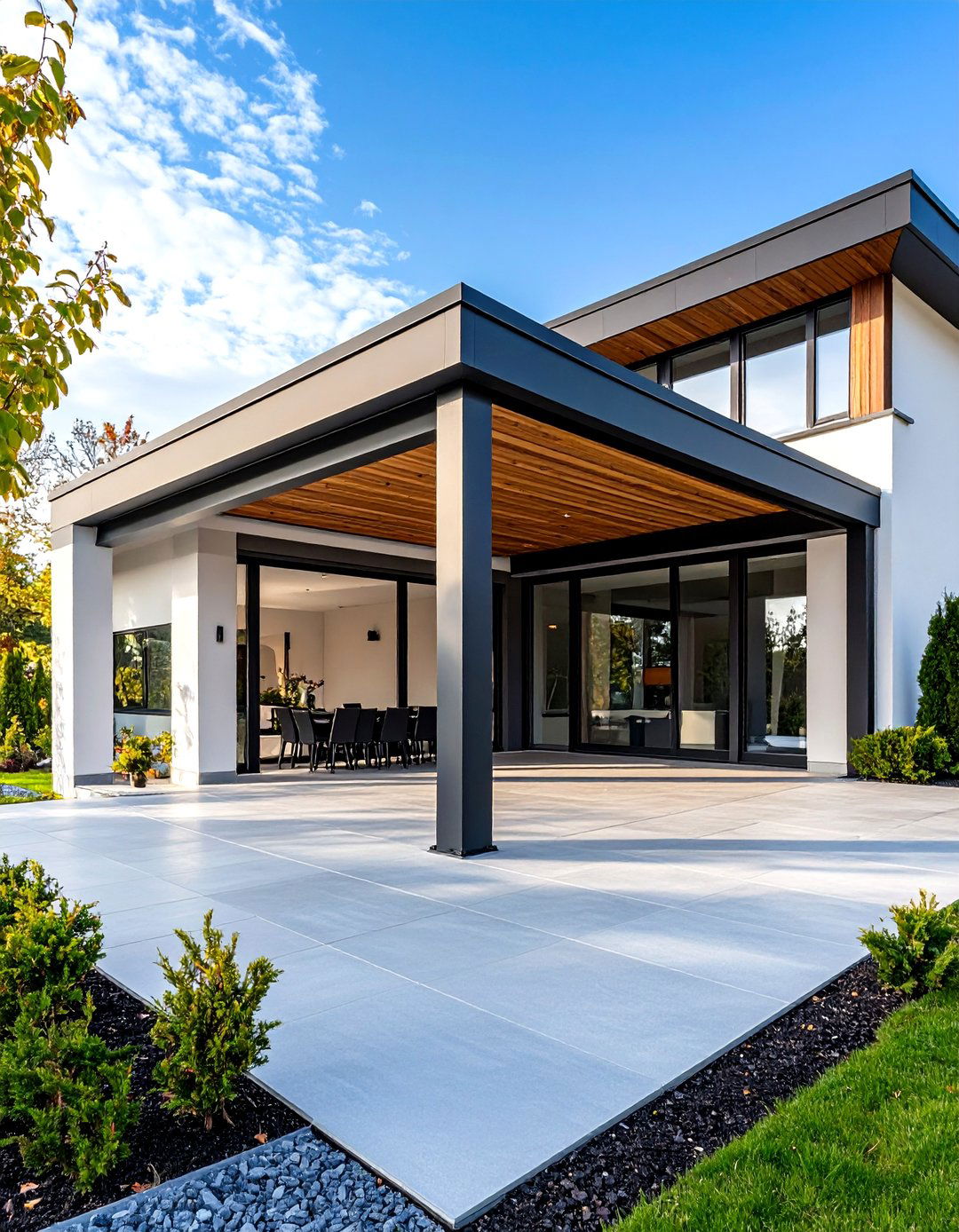
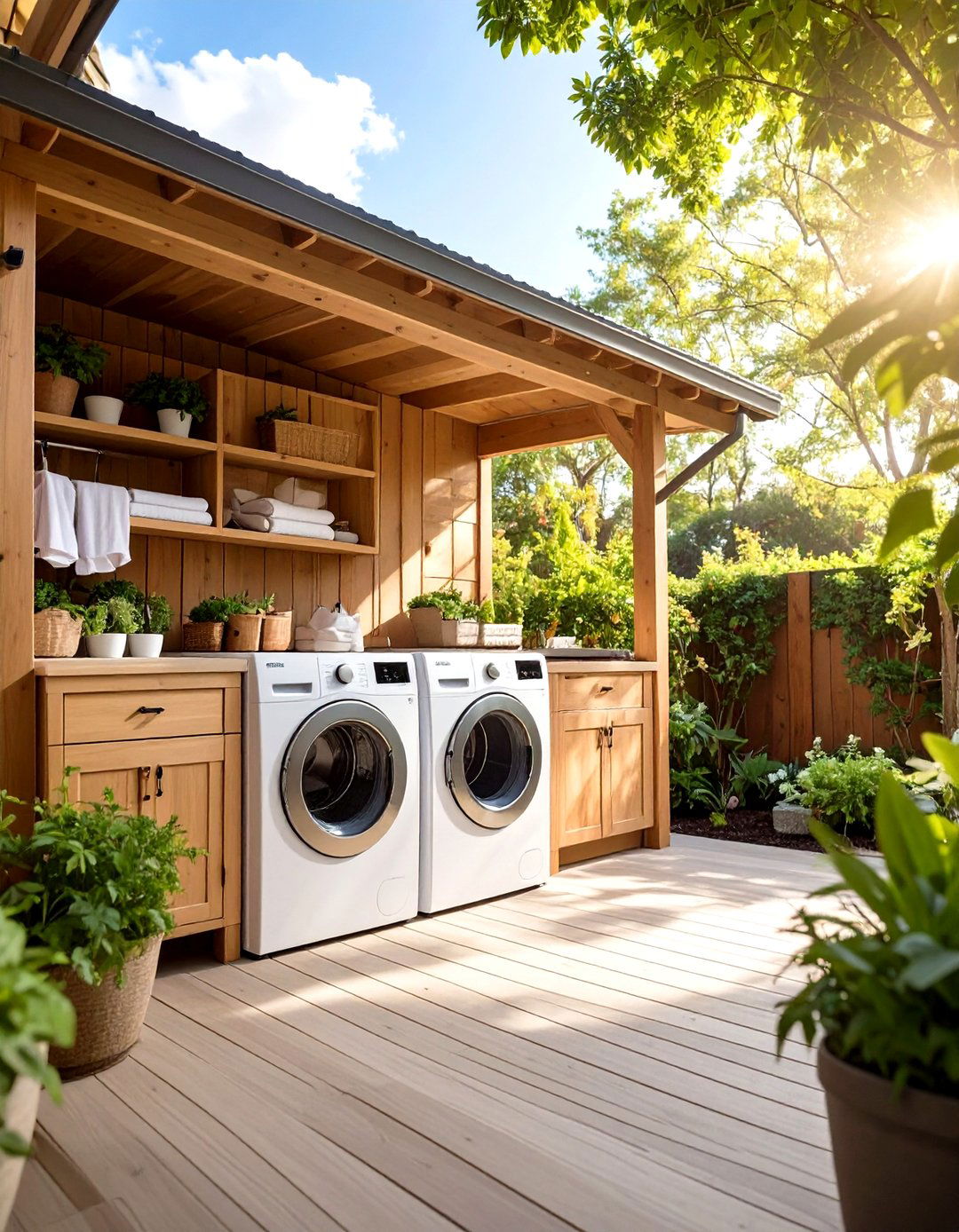

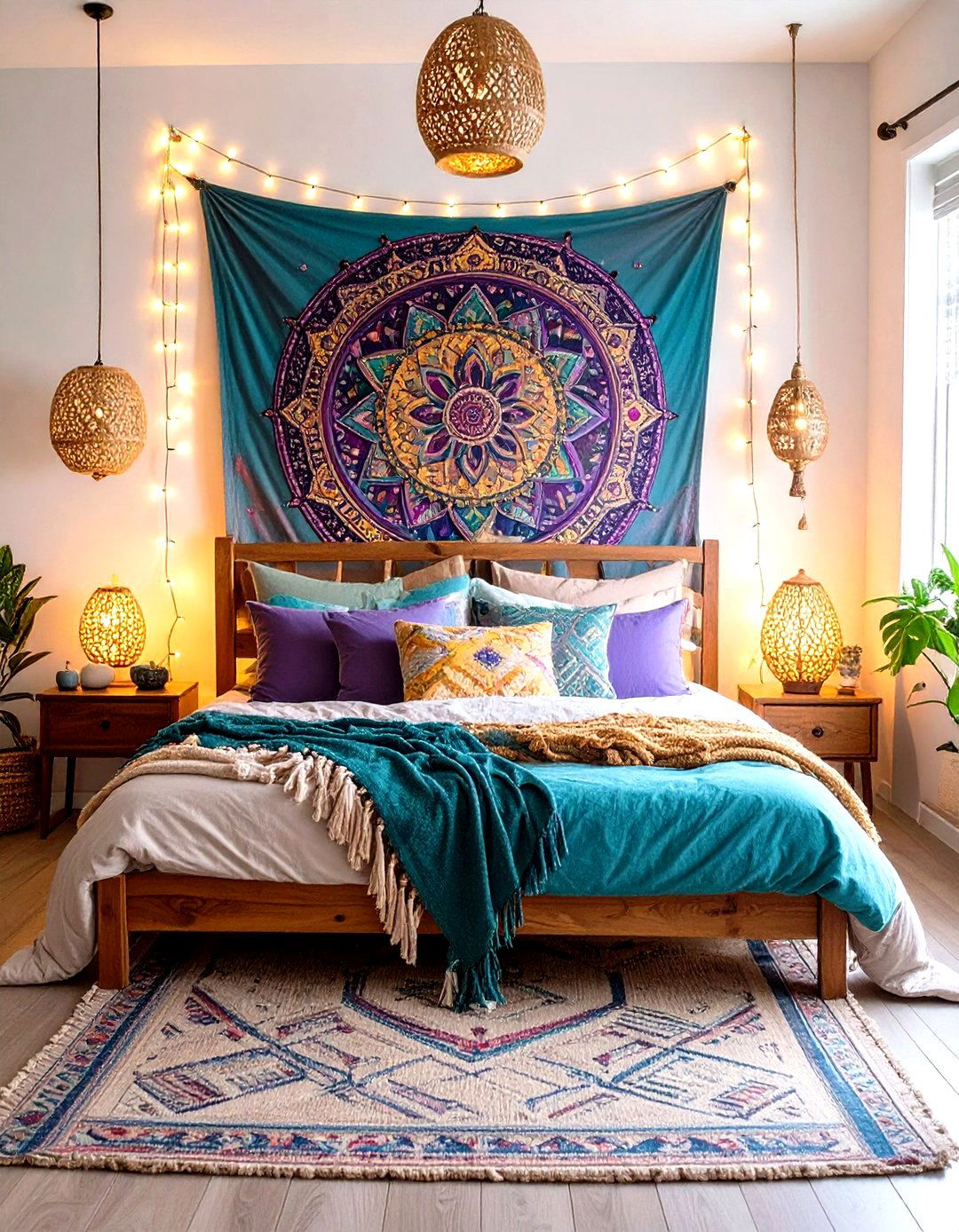

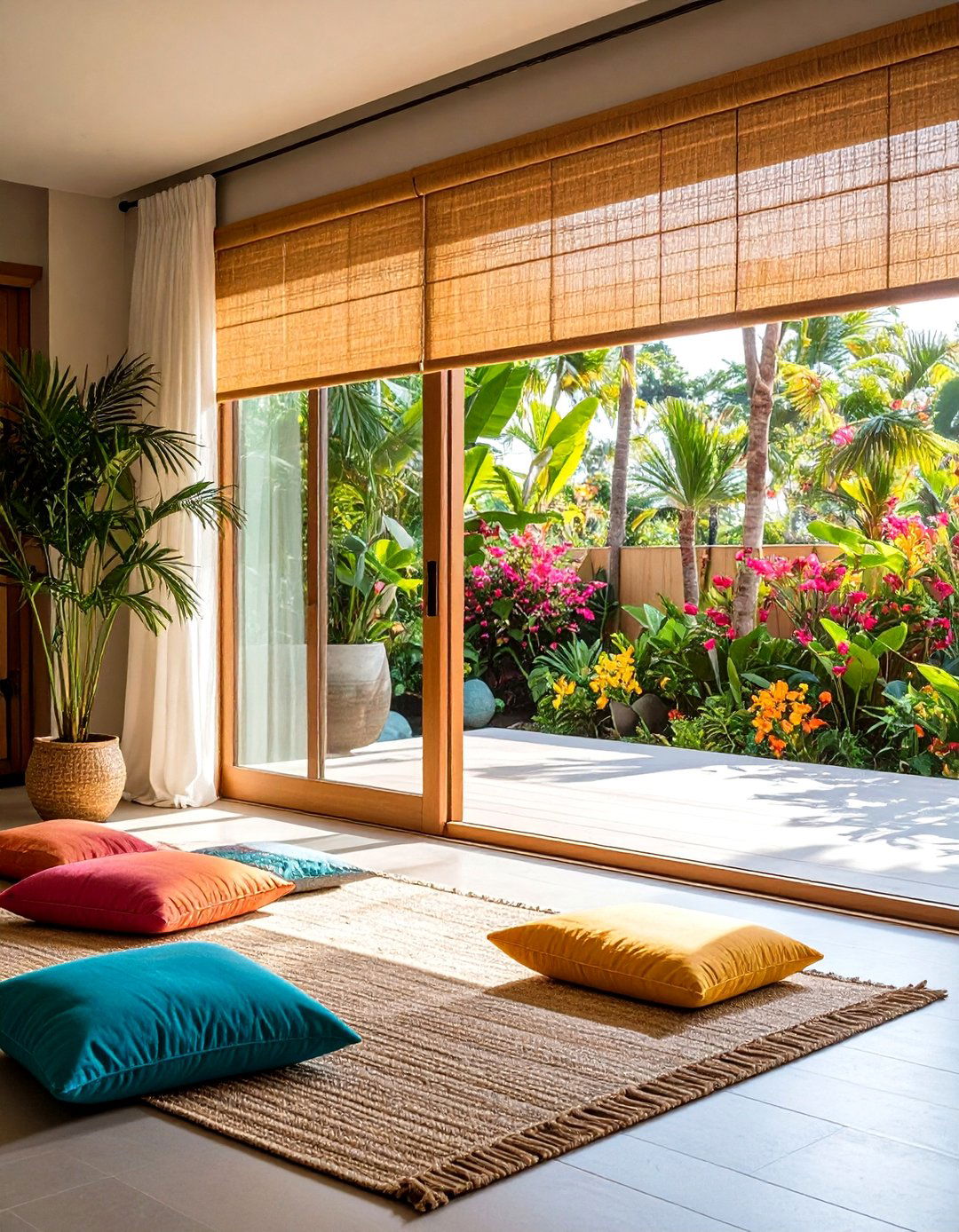
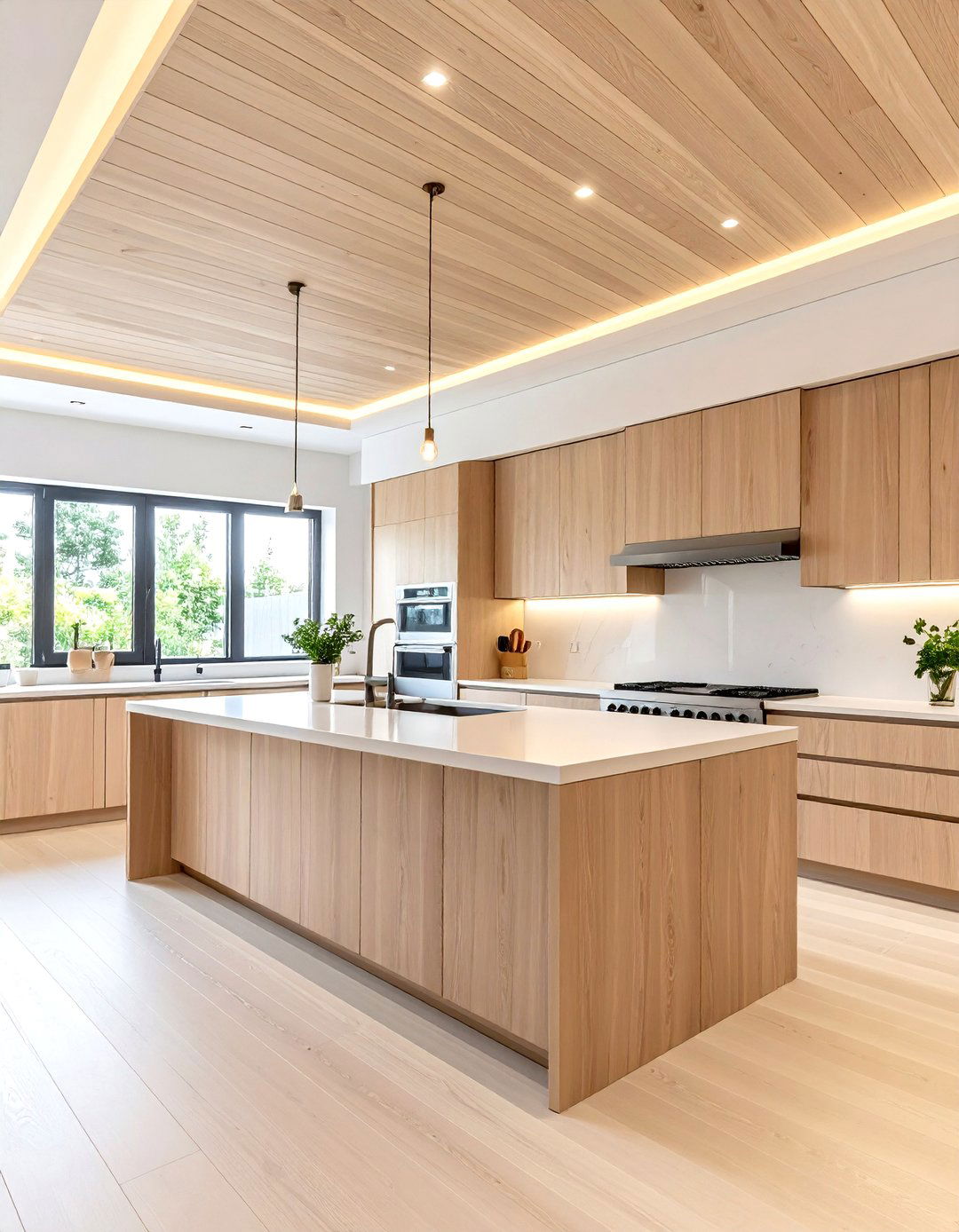
Leave a Reply